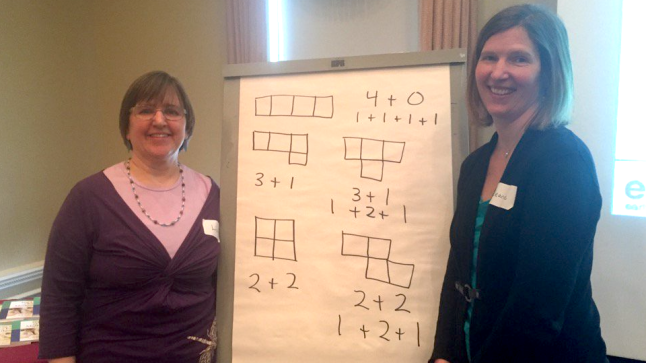Series: About the Collaborative
Collaborative Travels to Canada to Share Early Math Games and Activities

Collaborative instructors Lisa Ginet and Jeanine Brownell visited Alberta, Canada the week of April 25th, 2016 to provide professional development to teachers from Fort McMurray Public School District and the Alberta Learning Consortia. The sessions included an overview of foundational math concepts as well as hands-on early math games to support students’ developing number sense.
“Something that’s often lost is that this needs to be fun,” says Brownell. Indeed, all of the ideas that teachers receive during sessions or “learning labs” must eventually translate into something that will resonate with their students.
Early math games are great in this sense. They allow students to compete or cooperate with their peers in small groups. This relaxed environment allows students to apply their math knowledge towards a tangible goal without the fear of failure. This can help students develop a positive outlook towards math.
“Knock ‘Em Down” was one of the games that was discussed. Students are given two dice and a number line going from one to twelve. The goal is to “knock down” all of the numbers before their opponent. One at a time, the players roll the dice. If a 6 and a 3 are rolled, they can knock down 9. However, they can also create an expression equivalent to 9 and knock down those numbers: 12 – 3, for example, knocking down 12 and 3, or (11 – 6) + 4, knocking down 11, 6, and 4.
Since students can usually pick up on the rules of these games through observation, they are great activities for classrooms with English Language Learners (working in small groups and other considerations can also be helpful for these students). Once students get a grasp of the rules, math games also allow students to work independently or learn from other students, which can be a great way to encourage knowledge-sharing among peers.
These games can easily be adapted for play at home, allowing for math practice outside of the classroom and the engagement of students’ families on classroom content.